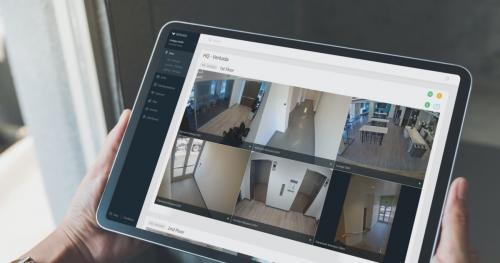What is Smart Technology and what are its Advantages?

Do you rely on an ordinary deadbolt lock, squint through a front door peephole and struggle to remember a long passcode to unlock your phone? It may be time to explore new technologies that can make it a snap to secure your life and home.
Security technology has developed rapidly, merging with smart technology to give consumers on almost any budget the ability to safeguard their devices, homes and lives seamlessly.
Smart technology - three different kinds:
1) Internet of Things (IoT) devices
A network of devices that make use of sensors, chips, software, online connectivity, analytics, and applications to bring static physical objects to life. These devices create substantial value, and they are futuristic, scalable, and automated.
Some prominent examples include smart cities, smart homes, and smart factories.
2) Smart Connected Devices
Controlled via a remote and connected via the internet or Bluetooth, smart connected devices can offer a customized experience but have to be handled given that they don’t adapt to the extent IoT devices do.
Smart security cameras, smart bulbs, and smartphones are some examples of smart connected devices.
3) Smart Devices
With limited automation, no need for internet connectivity, and programmable nature, smart devices, for instance, smart coffee makers, provide certain personalized services at a particular time.
Here are some smart security technologies to help keep you safe.
1. Biometric Technology
Many smart home technologies are operated through smartphone apps, so quick and easy access to your phone is key. But if you protect your phone with a difficult-to-guess passcode, as security experts recommend, it can take a while to punch in the numbers. Or, in a worst-case scenario, you could forget the code and end up locked out of your phone right when you need to check an app to see who’s at your door. Biometric features involve facial recognition, fingerprint recognition and iris recognition technology.
2. Two-factor Authentication
Two-factor authentication makes your accounts harder to crack. Typically requires a password or code as well as something only you would have on you.
When your home can be controlled from your smartphone, securing your device is crucial for keeping you and your family safe. After all, you don’t want a thief to get ahold of your phone and use it to unlock the front door.
Facial, fingerprint and iris recognition are often used on their own. This type of access is known as one-factor authentication because you need only one thing—a face, finger or eye—to get into an account or device. However, two-factor authentication adds an extra step, making it more difficult for anyone but you to gain access to your personal information.
3. Security Systems with Connected Cameras
Now, you can keep an eye on your home while you’re running errands, at work or on vacation. Smart security cameras allow you to check areas like your living room or backyard—anywhere, anytime, Daoust says. “Wherever you are in the world, you can log in to check different views of your home.
Some systems assign date and time stamps to images, so if you later learn that a camera sensed motion at 3 a.m. on your back porch, you can check the photo of that area from that time, Daoust explains. And many of the connected home security cameras can be accessed through a mobile device, so you won’t even need to have a computer on hand.
4. Smoke and Fire Warning System
Smoke and fire detection systems are designed to discover fires early in their development when the time will still be available for the safe evacuation of occupants. Early detection also plays a significant role in protecting the safety of emergency response personnel. Property loss can be reduced and downtime for the operation minimized through early detection because control efforts are started while the fire is still small.
The standard home security system does not provide smoke/fire detectors. A smoke/fire warning system will inform warning messages and ring alarms. They also provide information to emergency responders on the location of the fire, speeding the process of fire control.
5. Smart Locks for Your Exterior Doors
With a smart lock, you can give each person an individual code and even set your lock so that certain people can only get in at set times. If your smart lock is connected as part of a smart home system, you have more options, like setting the lock to automatically arm your home alarm system when you leave, he points out. And if you’re in bed at night and realize you forgot to lock the back door, you can just grab your smartphone to lock it without getting out of bed.
6. Doorbells
Smart doorbells equipped with cameras allow you to see who’s at your door, even if you’re not home. If the doorbell has a video intercom, you can see and talk to the person at your door or gate.
Instead of the old “ding dong” sound, you hear from an ordinary doorbell, a touch screen pops up on your smartphone or tablet and plays the sound of your choice. These doorbells help keep your home secure in that burglars commonly ring the doorbell to see if anyone is home, he points out. If a suspicious person rings your bell while you’re away, as long as you have a good cell signal, you can remotely tell them you’re not interested.
Post Your Ad Here
Comments